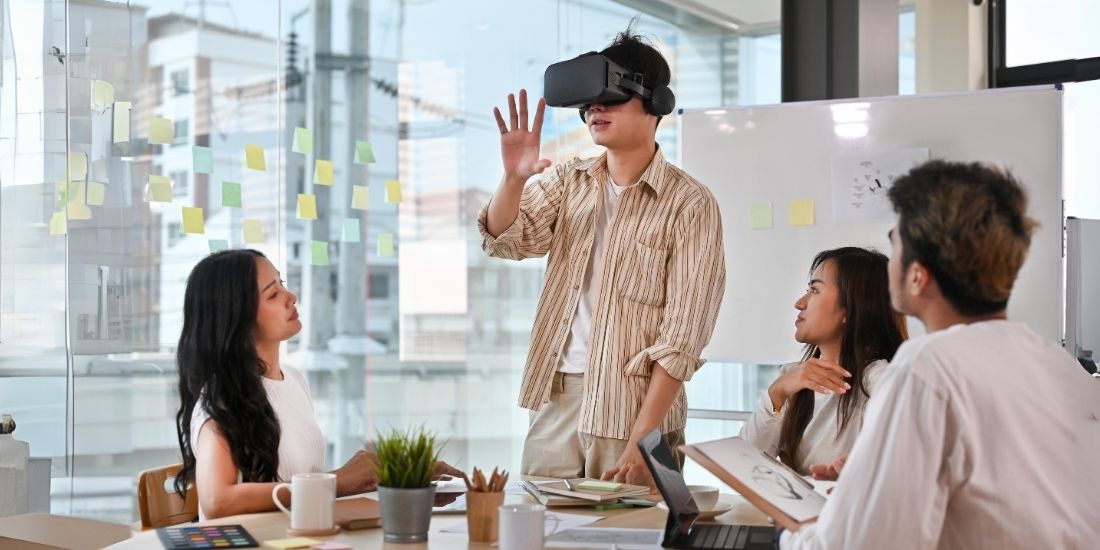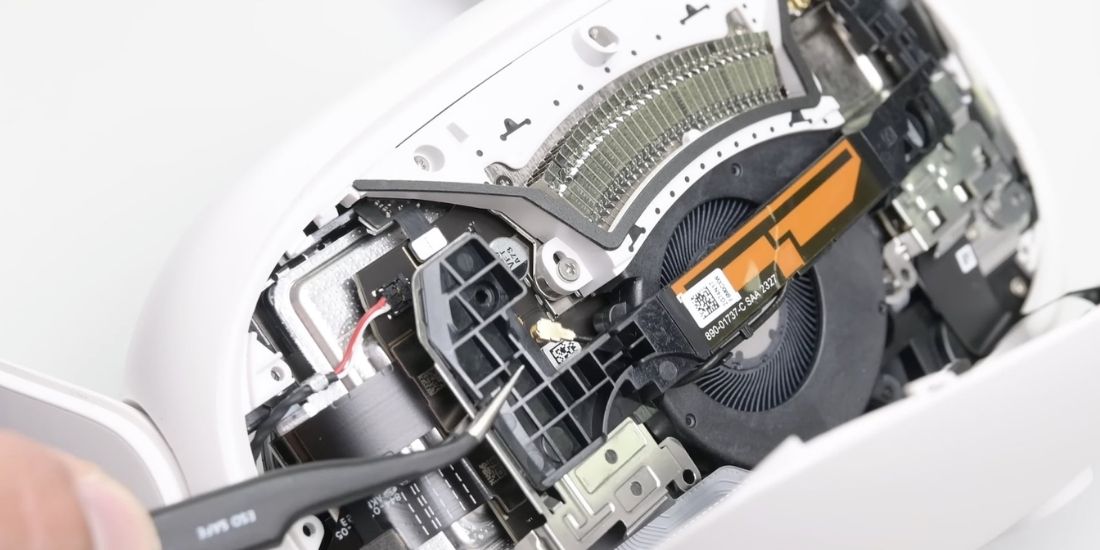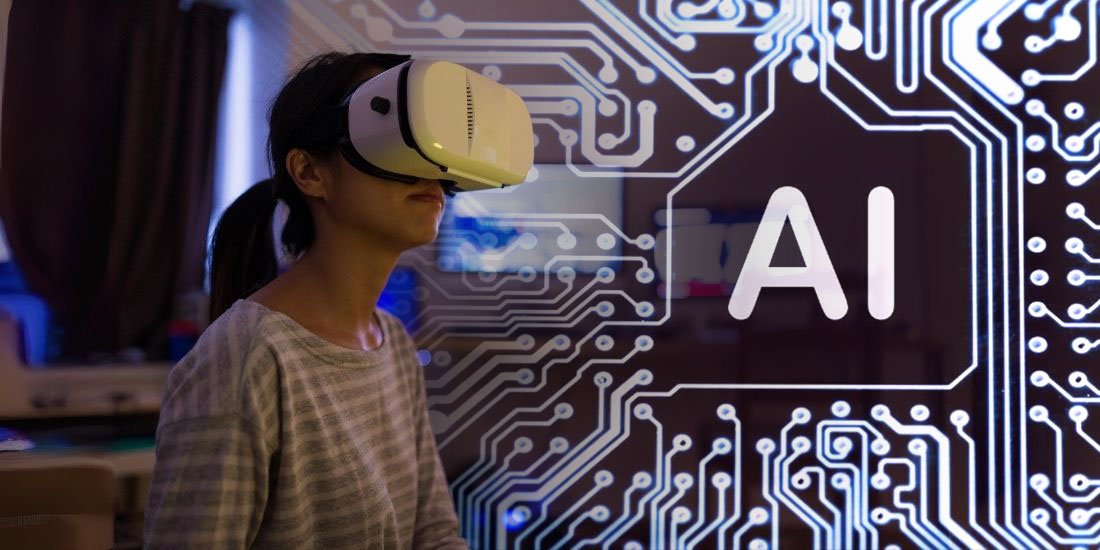AR isn’t VR – it’s even better!
- 26 March 2024
- Posted by:
- Category: Blogs

What is AR?
Augmented Reality (AR) is a technology used to overlay digital information onto the real world. This will include images, videos, or 3D models. Developers have explored the technology for decades.
In recent years, the market for AR and VR has widened as developers find more ways to use it. Major companies like Meta, Apple, and Samsung are focusing on creating VR products that expand beyond gaming.

How does it work? Is it any good?
A device like a smartphone, tablet or headset uses cameras and sensors to see what’s around you. AR software processes this real-world information and adds virtual objects to create an augmented reality experience.
The ability to view a combination of real-world and virtual elements was a massive step forward. Organisations commonly refer to this as passthrough technology. This innovation allows users to remain connected to their physical environment whilst using headsets. Users can now maintain a sense of spatial awareness whilst using AR applications.
Controllers, touchscreens, voice commands, and gestures are all methods for navigating and interacting with the augmented environment. Technologies like spatial audio and haptic feedback can help users feel more immersed.
Spatial audio is a sound technology that creates a three-dimensional audio experience for the user. Sounds come from various directions and distances, enhancing the experience. This can greatly enhance the overall experience and make it feel more realistic.
Haptic feedback uses vibrations to make virtual touch feel real. Users can feel physical sensations corresponding to what they see or interact with within the virtual world. This adds another layer of sensory input to the overall experience.
By combining spatial audio, haptic feedback, and other immersive technologies, developers can create more convincing and engaging user experiences.
Limitations
The technology has its limitations. Firstly, it can be costly to produce. The Apple Vision Pro costs $3,499; users could purchase a MacBook and multiple monitors at a fraction of the cost. Apple AR apps and AR content are scarce which may also discourage purchases.
VR and AR products on the market struggle to offer a battery life that lasts more than a couple of hours. Conversely, a larger battery would mean a heavier and bulkier headset which may worsen the experience.
Virtual 3D objects do not currently integrate seamlessly with real life. You can distinguish between real and virtual elements. This seems to be a greater issue when outdoors.
AR and AI
Artificial intelligence (AI) interprets a lot of the data from the camera and sensors on your device. Machine learning algorithms learn your space, items, and personal preferences.
Image and object recognition – AR uses AI to improve its ability to recognise and track real-world items.
Spatial mapping – AI helps create a digital version of your surroundings so virtual elements can integrate more convincingly.
Tailored content delivery – AI software learns about you, your environment and your preferences to improve your AR experience.
How is it accessed?
Smartphones – Mobile devices are incredibly common and users can take them virtually anywhere. They can use cameras, a display, gyroscopic technology, and GPS to augment reality. Users sometimes place smartphones within headsets to access headset capabilities at a more reasonable cost than a dedicated headset (see Google Cardboard).
Tablets – They are like large smartphones with longer battery life and a larger screen. Their AR user experiences are therefore very similar.
Smart Glasses – Many firms consider them to be the future of AR technology. Smart glasses sit between smartphones and headsets in capabilities. They face hardware limitations as they must sit comfortably on the face. They, however, offer more immersion than a phone because they sit directly in front of the eyes.
Headsets – They currently offer the most immersive user experience. Passthrough technology has progressed significantly, almost replicating vision. The Meta Quest 3, Apple Vision Pro and PlayStation VR are leaders in the space.
Why AR isn’t VR
AR and VR are terms commonly used interchangeably – this is because they work similarly to one another. They are both accessible using headsets however there are key differences between them.
Augmented Reality (AR) alters the physical world by overlaying digital elements.
Virtual Reality (VR) involves full immersion – you interact with a completely virtual environment.
Other terms you may encounter within the VR space are Mixed Reality (MR) and Extended Reality (XR).
Mixed Reality is similar to Augmented Reality in its combination of real-world and digital elements. In Mixed Reality, however, physical and digital elements can interact with each other. Extended Reality is an umbrella term that includes all AR, VR and MR technology.
What does AR currently look like?
Augmented Reality has existed for much longer than many of its users may think. In fact, Snapchat, Ikea, and BMW are just a few companies that have been using AR technology for years.
Social media filters
Snapchat was the first social media platform to make AR popular with face filters over ten years ago. Users could transform themselves into puppies and rainbows with just a simple click.
This use of AR wasn’t the most reliable because poor lighting or quick movements easily obstructed the filters. However, audiences positively received them and they became massively popular.
IKEA app
Ikea uses AR to let you try out products in your space before buying them, helping you see how well they would fit within your home or office. Save time and money when buying furniture and other items by using this helpful tool. It offers its users a better understanding of item scale and how it pairs with other items within your space.
Pokemon GO
The popular free mobile game was a huge hit, using GPS to detect Pokemon nearby and let you catch them. It promoted the use of AR outdoors and is a successful example of AR encouraging exercise and socialising.
Parking cameras
A simple and useful example of AR in everyday life is its use in parking cameras. Receive live feed of the space behind your vehicle along with annotations that help you reverse safely into a bay.
What its future may look like
AR technology has been around for longer than you may have previously thought. The technology is now developing faster than ever due to significant investment in its R&D. We hope to see these investments lead to the technology becoming cheaper and more accessible.
AI technology, a crucial element of AR, requires a lot of energy. We hope to see more investment into energy efficiency as the product becomes used by more people and for longer periods.
We would love to see improvements to the quality and integration of digital assets. At the moment, virtual objects do not seamlessly sit in our real-world environment – a user would have no trouble distinguishing a virtual apple from a real apple, for example. This development would massively improve immersion.
Developers will likely create more apps and content specifically for experiencing in VR and AR headsets. Apple has struggled to convince developers to create apps for their Vision Pro. We hope to see the strained relationship between Apple and its developers resolve.
Similarly, we may see adjustments in the real world like public headset chargers or interactive AR advertisements.
At Cubit Technology, we love new tech and exploring its potential for enhancing work processes, especially for creative professionals. We are an IT MSP based in Holborn, London, that provides IT support and solutions for London-based creative agencies.
If you are interested in AR and how it can benefit your work processes, follow us on social media! We would love to hear from you and discuss how it will change the workplace.
Reach out to Ralph today to discuss whether we can introduce IT managed services to improve your business.




